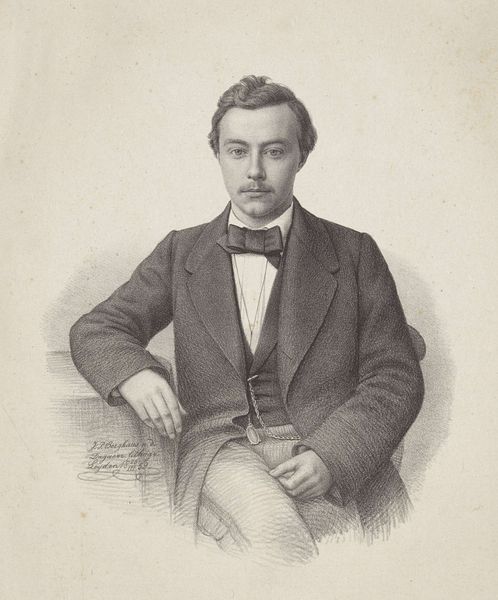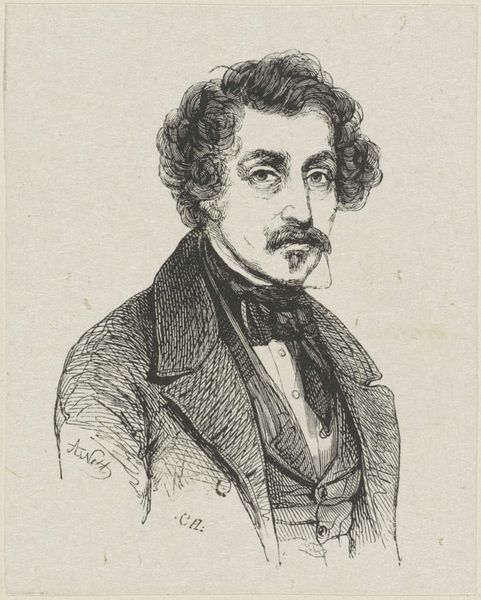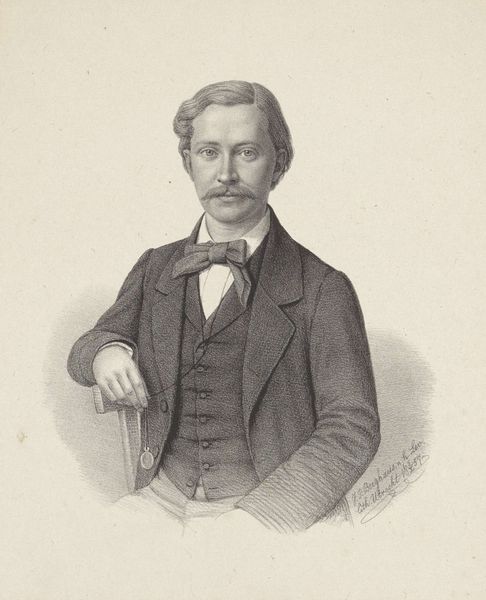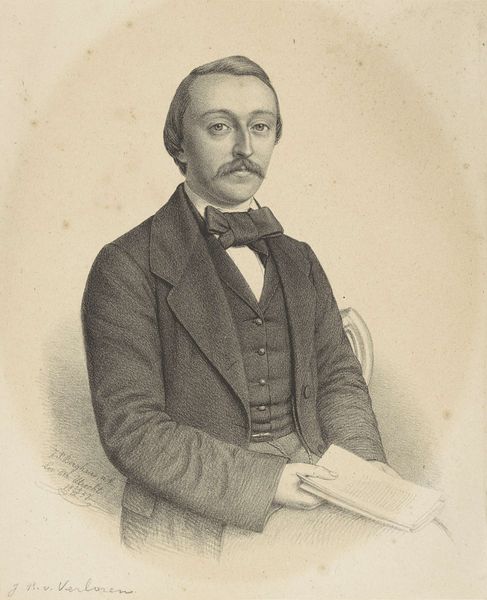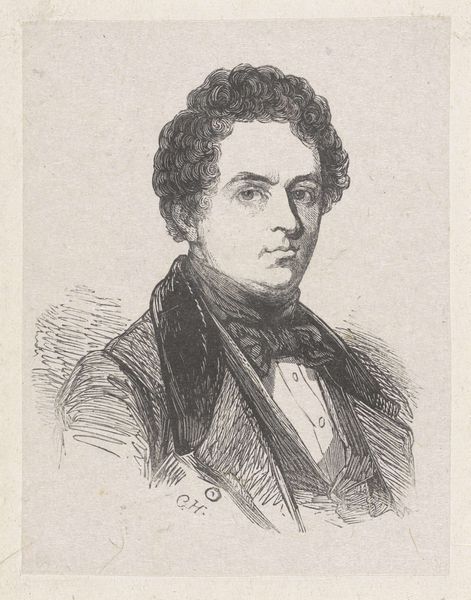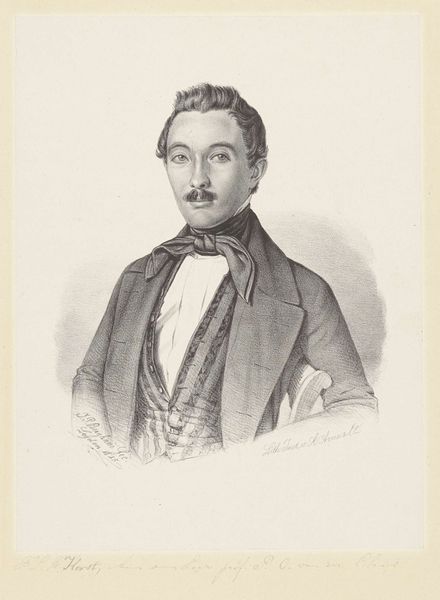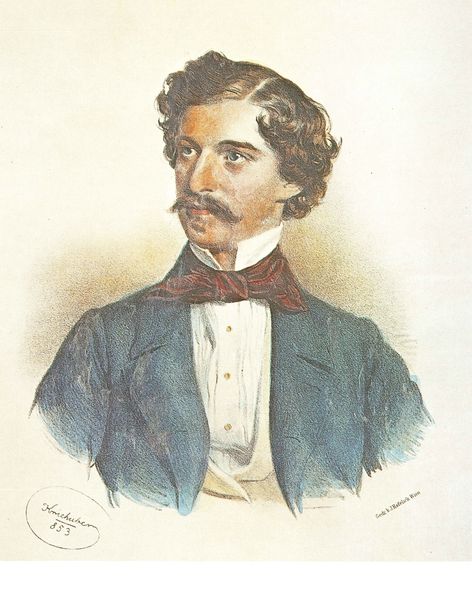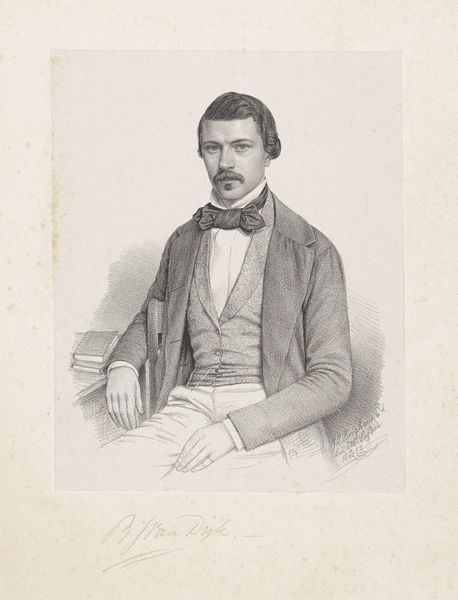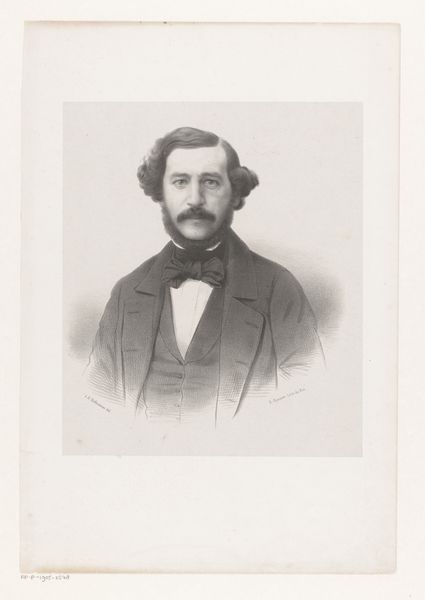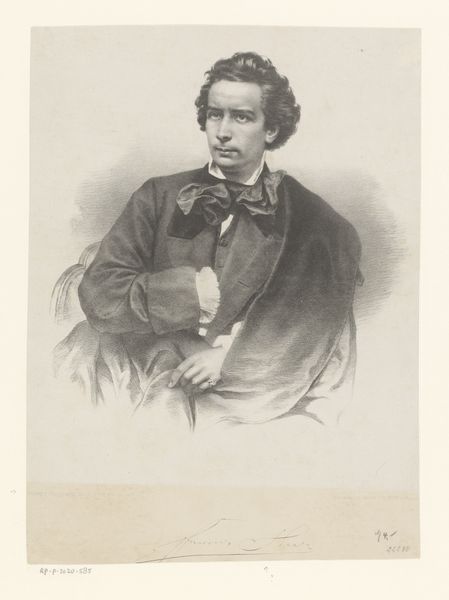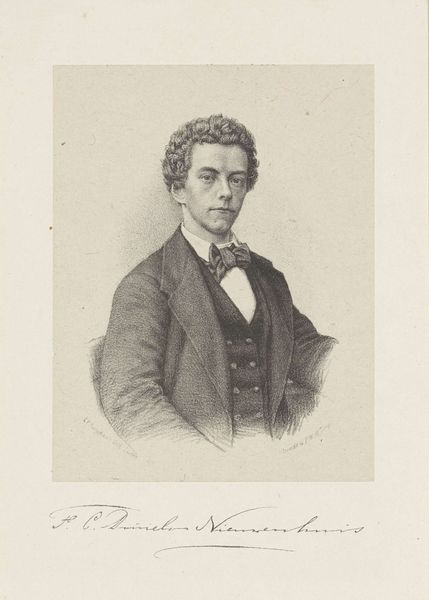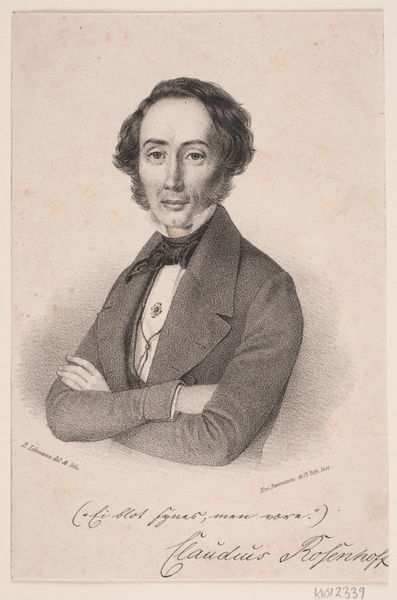
Portret van een onbekende man, mogelijk W.L. van Rappard Possibly 1858
0:00
0:00
johannpeterberghaus
Rijksmuseum
Dimensions: height 211 mm, width 170 mm
Copyright: Rijks Museum: Open Domain
Johann Peter Berghaus made this portrait of an unknown man, possibly W.L. van Rappard, around 1858, using lithography. This printmaking technique involves drawing with a greasy crayon on a stone or metal plate, then inking the surface; the ink adheres only to the drawn areas. The image is then transferred to paper. Lithography democratized image production in the 19th century. Unlike engraving, which required specialized skills and was laborious, lithography allowed for relatively quick and inexpensive reproduction. The texture here is striking: note the fine, almost velvety quality of the shading, achieved through subtle variations in pressure and the grain of the lithographic stone. Consider the social context: as a commercial process, lithography thrived on the growing middle class and their desire for affordable portraits and illustrations. Berghaus's choice of this medium reflects a shift in artistic production, from unique handcrafted works to mechanically reproduced images that speak to wider social issues of accessibility and consumption. It’s a reminder that even seemingly straightforward portraits are deeply intertwined with the technologies of their time.
Comments
No comments
Be the first to comment and join the conversation on the ultimate creative platform.
